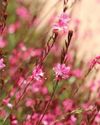
Evergreen trees or large shrubs with surface root systems bully smaller plants trying to survive beneath them by robbing them of nutrients, moisture and light. And so do the huge hedges and screening plants we have to plant for privacy. They cause the top layers of soil to become lifeless and bone dry.
Dry shade can also be caused by the overhang of a building preventing rain from reaching plant roots especially against southfacing walls - areas that we sometimes neglect to water, believing that a rainy spell would have sorted it out.
As always, there is a lesson to learn from Mother Nature. In dense thickets and forests, you will see underbrush consisting of small shrubs, bulbs, succulents and groundcovers growing quite happily in dry shade. This can be replicated in a garden with the right plant choices, proper soil preparation before planting and good aftercare.
Improve the soil
- Dig in generous amounts of quality compost to improve water holding capacity and to encourage healthy microorganism activity.
- Make use of the modern water retention products which keep the soil moist for longer and draws the water and added nutrients down to the roots where it is needed. Apply soil wetting agents regularly in these areas and use polymer planting gels when preparing planting holes for individual plants.
Extra feeding
Realising that the roots of small plants will always be in competition with the roots of big established plants, it makes sense to fertilise them regularly throughout the warm months with a balanced, slow-releasing fertiliser.
Watering
هذه القصة مأخوذة من طبعة July 2023 من The Gardener.
ابدأ النسخة التجريبية المجانية من Magzter GOLD لمدة 7 أيام للوصول إلى آلاف القصص المتميزة المنسقة وأكثر من 9,000 مجلة وصحيفة.
بالفعل مشترك ? تسجيل الدخول
هذه القصة مأخوذة من طبعة July 2023 من The Gardener.
ابدأ النسخة التجريبية المجانية من Magzter GOLD لمدة 7 أيام للوصول إلى آلاف القصص المتميزة المنسقة وأكثر من 9,000 مجلة وصحيفة.
بالفعل مشترك? تسجيل الدخول

Fixing things in 2025!
One should start a new year by sitting firmly on one's throne, not breaking it and falling off!

Silver staghorn ferns at platinum prices
When we think of a staghorn fern, Platycerium bifurcatum, which can be found in many South African gardens, usually comes to mind.

Tic Tac Toe
Keep children (and adults) busy for hours with this stylish game for the patio.

Let's change the way we think about food
Healthy food is all about preparing fresh ingredients in the simplest (yet tasty) way. Today's balanced diet includes lots of fiber, plenty of fruits and vegetables, and proteins in the form of meat, like lean pork. Keep it interesting, and you can't go wrong.

Grow Wayne's favourite things
Midsummer is when your garden is at its lushest. It's always playtime in the garden, and whether it's lying under a tree or finding more stuff to grow, gardens are our safe space for self-expression and joy.

THE BEST OF SUMMER
Summer annuals offer more than just colour, texture, and variety in a garden.

PLANT A COLOUR explosion!
Angelic angel wings and a dwarf morning glory can keep colour all around you from spring to autumn, and will be back to do it all over again next year...

SAVING TIME in the garden
Just like Jamie Oliver can teach us to cook a meal in 15 minutes, there are ways to garden in 15 minutes or less. Here are some of our top time-saving tips to make gardening easier, quicker and more fun.

FUN PROJECTS for the New Year!
If you want a wow factor for your next party, try revamping a piece of driftwood into something amazing with these few steps.

Evolving for LONGEVITY
A continuously transforming garden has longevity, which is certainly true for the garden at Brahman Hills in the Midlands of KwaZulu-Natal.